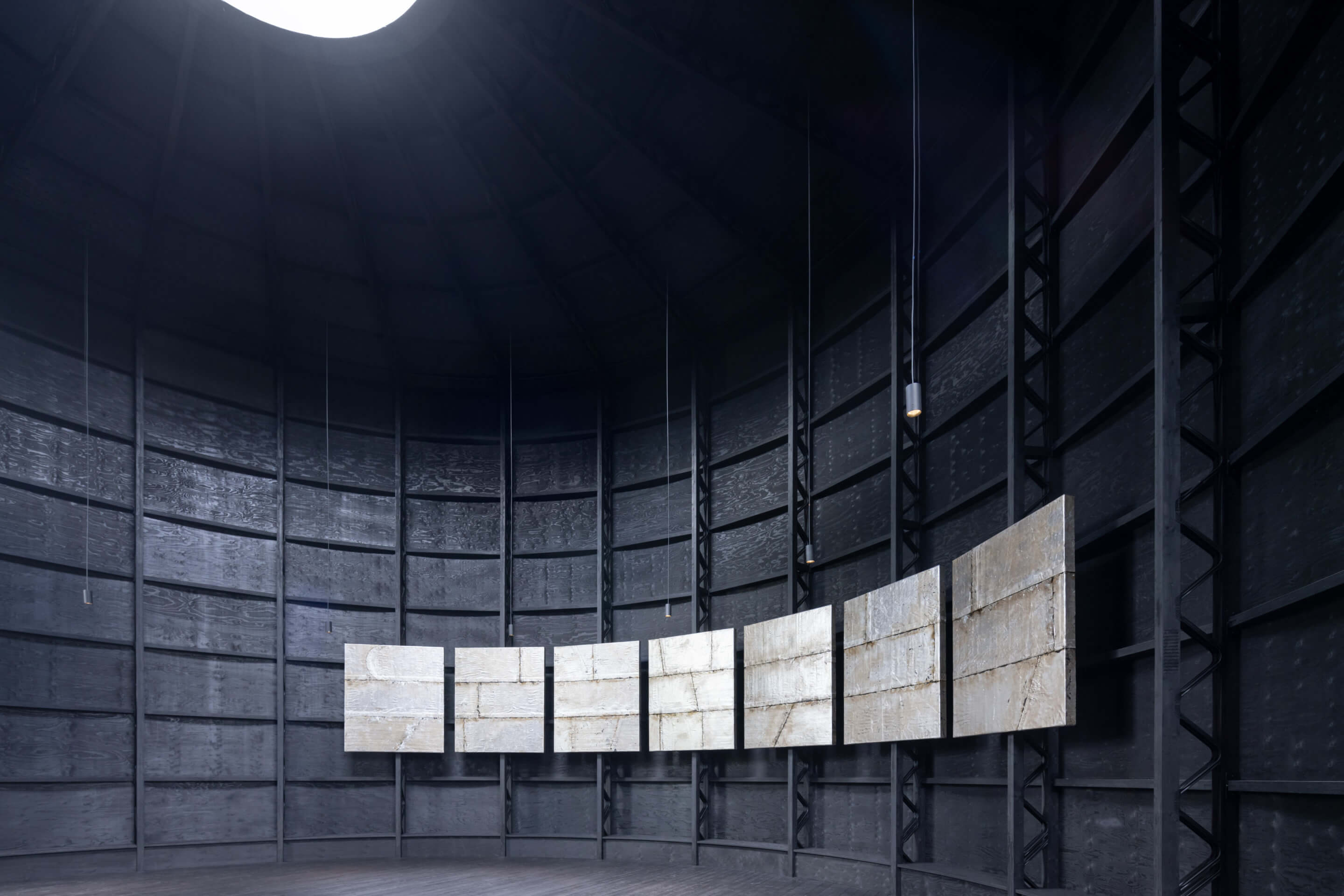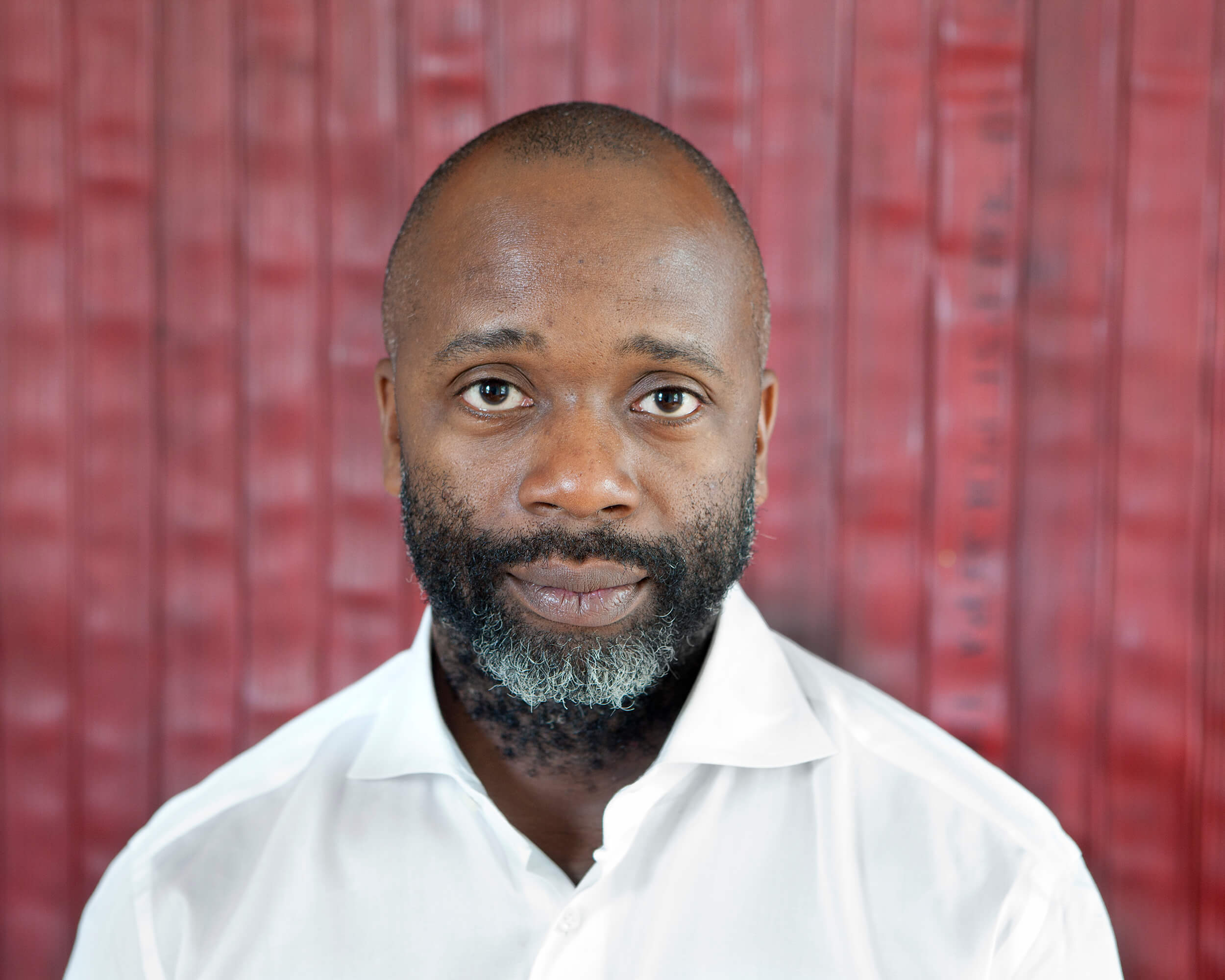Chicago-based social practice artist Theaster Gates’s Black Chapel is set to debut at London’s Kensington Gardens as the first non-architect-designed commission in the 22-history of the Serpentine Pavilion, the Serpentine Galleries’ flagship annual temporary architecture program. For his Black Chapel, which opens to the public June 10 and kicks off a full season of summertime creative programming hosted by the Serpentine, Gates received an architectural assist from Adjaye Associates.
On June 8, Gates will be joined by David Adjaye, who also sat on this year’s Serpentine Pavilion selection committee, for a discussion with Serpentine artistic director Hans Ulrich Obrist on their “work in art, architecture, urbanism and space-making” to mark the opening of this year’s pavilion.
Said Gates in a statement:
“The name Black Chapel is important because it reflects the invisible parts of my artistic practice. It acknowledges the role that sacred music and the sacred arts have had on my practice, and the collective quality of these emotional and communal initiatives. Black Chapel also suggests that in these times there could be a space where one could rest from the pressures of the day and spend time in quietude. I have always wanted to build spaces that consider the power of sound and music as a healing mechanism and emotive force that allows people to enter a space of deep reflection and deep participation.”
Envisioned as a space for “gathering, meditation, and participation,” Black Chapel was inspired in part by the meditative qualities—the “transcendental environment” as the Serpentine put it in a press release—of the Rothko Chapel in Houston. As previously detailed by AN when Gates’s design for the 2022 Serpentine Pavilion was first unveiled this past February, the work’s cylindrical, oculus-topped form references British craft traditions, specifically ceramics (and the massive “bottle ovens” that enabled production on an industrial scale at Stoke-on-Trent) as well as the beehive charcoal kilns of the Western United States, San Pietro and the Roman tempiettos, and traditional African structures such as the Musgum mud huts of Cameroon and the Kasabi Tombs of Kampala, Uganda.

Placed next to the Pavilion’s entrance is an operating bronze bell salvaged from St. Laurence, a landmark Catholic church on Chicago’s South Side that was demolished in 2014. “Underscoring the erasure of spaces for convening and spiritual communion in urban communities, the historic bell will act as a call to assembly, congregation and contemplation throughout the summer’s events,” detailed the Serpentine in its announcement.
Organized by guest curator Bianca A. Manu and Yesomi Umolu, the Serpentine’s Director of Curatorial Affairs and Public Practice, the forthcoming, bell-convened slate of events are set to include experimental music performances, sonic interventions, clay workshops hosted by Mud Gang Pottery Studio, panel discussions, a Japanese tea ceremony, and other “artistic explorations of the monastic.”
Suspended within the interior of the Pavilion are a series of seven new tar paintings created by Gates that pay tribute to his late father, a roofer and builder by trade. “With the recent passing of my father, the Pavilion resembles a memorial, not only to the legacy he shared with me, but also to the ways in which his vocation has become my vocation” Gates explained in his artistic statement. “Black Chapel seems to hold ways of working. Through space, the vessel produces ways of being together and ways of understanding each other by being adjacent to one another. Black Chapel is a vessel and a container for those who choose to gather.”

Black Chapel also shares a name and serves as a continuation of a 2019 Gates’ installation realized at the Haus der Kunst in Munich, an “attempt to bring Black spiritual life” to a museum originally built for the Nazi regime in 1937. “My Pavilion Black Chapel continues my professional investment in the creation and preservation of structures for spiritual possibilities,” said Gates. Black Chapel also culminates the two-year survey The Question of Clay, a collaboration between the Serpentine, The Victoria and Albert Museum, Whitechapel Gallery, and White Cube that saw Gates investigating clay’s role in craft, labor, history, colonialism, religion, and every other possible aspect through sculpture, film, and now architecture.
Constructed from stained and sustainably–sourced wood, the 2022 Serpentine Pavilion is a relatively lightweight affair (at least compared to last year’s hulking steel and concrete installation designed by South African studio Counterspace). Notably, the material composition of the Pavilion has peripheral ties to AN as it is the first international project realized under the Grace Farm Foundation’s Design For Freedom initiative. Design For Freedom/Grace Farms, which served as Responsible Materials Advisor for the 2022 Serpentine Pavilion, was first conceived by Grace Farms founder and CEO Sharon Prince and Bill Menking, the late cofounder and editor-in-chief of The Architect’s Newspaper, in the fall of 2017 to raise awareness of forced labor within the AEC industry and implement ways to wholly eradicate it in favor of an ethical supply chain untainted by human suffering. Design For Freedom officially launched in October 2020 and held its inaugural summit at Grace Farms’ New Canaan, Connecticut, campus this past March.

In its role as Responsible Materials Advisor, Grace Farms worked alongside Serpentine and technical advisor AECOM to ascertain the origins of the timber and plywood used to construct the Pavilion as well as its concrete, steel trusses, and weatherproofing membrane. “The team engaged with suppliers and manufacturers to trace and document these materials as far upstream in the supply chain as possible, thereby creating transparency and reducing the risk of forced and child labor in the products used to construct the Pavilion,” Grace Farms explained in a press announcement.
“It is an honour that Design for Freedom by Grace Farms is collaborating with Serpentine to assess ethical sourcing of the building materials for the 21st Serpentine Pavilion,” added Prince in a statement. “This first completed international Design for Freedom project is accelerating the growing movement to eliminate forced labour from the building materials supply chain. Grace Farms looks forward to enhancing this partnership through shared programming this year in the U.S. at Grace Farms and at Serpentine.”
Black Chapel will remain on view through October 16 and is open daily from 10 a.m. to 6 p.m., except for June 30 when it will be closed to the public and reopen the following afternoon. All events held at the Pavilion are free to the public, unless otherwise noted by the Serpentine.
Goldman Sachs is serving as the Serpentine Pavilion’s headlining partner for the eighth consecutive year with Therme Group and the Zurich-based LUMA Foundation serving as supporting partners. Past commissioned designers of the Serpentine Pavilion include, among others, Zaha Hadid (2000), Oscar Niemeyer (2003), SANAA (2009), Sou Fujimoto (2013), and 2022 Pritzker Prize laureate Francis Kéré (2017).











